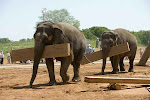Target = 15 quotes
1. Laughey, Dan (2009): Media Studies Theories and Approaches. Harpenden, Herts: Kamera Books. Pg 70
“Representation is less about the power of capitalist media production and more about the power of the media to make meanings from what gets produced”
2. Creeber, Glen (2003): The Television Genre Book. London: BFI Publishing. Pg 108
“The liberal pluralist model assumes that television news provides useful information and thus plays an important role in strengthening democracy and citizenship”
3. Laughey, Dan (2009): Media Studies Theories and Approaches. Harpenden, Herts: Kamera Books. Pg 102
“When the lines between normal and deviant are clearly drawn, the labeling process can have a spiraling effect in further alienating those already labeled"
4. Laughey, Dan (2009): Media Studies Theories and Approaches. Harpenden, Herts: Kamera Books. Pg 78
“Following on from his analysis of hegemonic media representation, Hall claims that ethnic minorities are continually misrepresented by racial (and racist) stereotypes”
5. Williams, Kevin (2003): Understanding Media Theory. Madison Avenue, NY: Arnold Publishers. Pg 130
“Lippmann regarded stereotyping as ‘inadequate and biased, endorsing the interests of those who use them, as obstacles to rational assessment, and as resistant to social change”
6. Creeber, Glen (2003): The Television Genre Book. London: BFI Publishing. Pg 109
“The need for the news programme to deliver an audience to advertisers in a ‘buying mood’, may also be a powerful force in structuring the nature of a news broadcast”
7. Williams, Kevin (2003): Understanding Media Theory. Madison Avenue, NY: Arnold Publishers. Pg 132
“Media stereotyping provides false impressions of certain groups and people. Stereotypes are ‘less real, more perfect or imperfect and more predictable than their real life counterparts”
8. Casey, Bernadette. Casey, Neil. Calvert, Ben. French, Liam. Lewis, Justin (2003): Television Studies: The Key Concepts. New York, NY. Routledge. Pg 187
“Ethnicity has been viewed as a set of cultural features including religion, language, and customs which are characteristic of a particular group”
9. Casey, Bernadette. Casey, Neil. Calvert, Ben. French, Liam. Lewis, Justin (2003): Television Studies: The Key Concepts. New York, NY. Routledge. Pg 188
“News is manufactured according to the rituals and routines of news production rather than a set of spontaneous events”
10. Williams, Kevin (2003): Understanding Media Theory. Madison Avenue, NY: Arnold Publishers. Pg 130
“While some stereotypes may contain some useful and accurate information about a member of a category, Lippmann recognised that ‘each member of any category will have many characteristics are not suggested by the stereotypes and may even have some characteristics that run counter to some of stereotypes”
11. Creeber, Glen (2003): The Television Genre Book. London: BFI Publishing. Pg 109
“TV news makes self-conscious claims about the relationship between the world outside and the world it reports, it makes a difference whether we see television news as a reproduction of reality or as a social construction”
12. Casey, Bernadette. Casey, Neil. Calvert, Ben. French, Liam. Lewis, Justin (2003): Television Studies: The Key Concepts. New York, NY. Routledge. Pg 144
“News is strongly influenced by ‘news values’, the profession’s informal principles which define what is newsworthy and which are deemed to shape selection, ordering and presentation”
13. Laughey, Dan (2009): Media Studies Theories and Approaches. Harpenden, Herts: Kamera Books. Pg 101
“The media today are without a doubt, the most central cog in the labeling process. Newspapers, for instance don’t just report on events of public interest; they endlessly comment on these events in a way that purports to reflect the public mood for days and weeks to come”
14. Williams, Kevin (2003): Understanding Media Theory. Madison Avenue, NY: Arnold Publishers. Pg 162
“Cohen identifies several stages to a moral panic. It begins with the definition of a threat or the emergence of a problem or concern; this is represented in the media; there is a rapid build-up of public anxieties and calls for something to be done; the authorities respond and finally the panic recedes or changes in the law or social behaviour result”
15. Casey, Bernadette. Casey, Neil. Calvert, Ben. French, Liam. Lewis, Justin (2003): Television Studies: The Key Concepts. New York, NY. Routledge. Pg 232
“In Britain, the comedy show Goodness Gracious Me has broken new ground, not only by introducing audiences to a variety of Asian characters but by utlising stereotypes of British Asian life and turning them on their head”








No comments:
Post a Comment